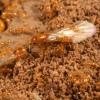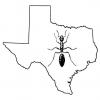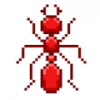Noticed this in my backyard today:
http://imgur.com/a/yRU6N#0 (6 pictures)
See how the bottom of the vine is darker green? I went in for a close-up and realized it's covered in aphids!
And there are ants roaming around them! Actually, the ants are traveling in two directions.
The ants traveling DOWN toward the end of the vine, where the aphids are, have small (empty), opaque gasters.
The ants traveling UP away from the end of the vine, back to the nest, have much larger gasters--now with translucent stripes. They're full of aphid poo!
Tried to get video but it turned out terrible. Hope you guys enjoy the pictures!
What species is this?
Edited by prettycode, September 3 2015 - 6:28 PM.






















